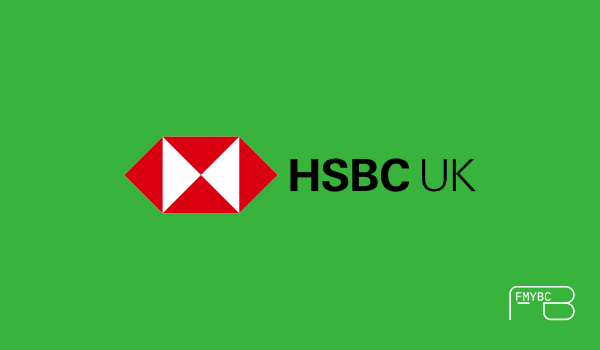
They turn big, often stressful expenses into structured repayments that are easier to manage month by month. Whether the goal is paying off expensive credit cards, improving a home, or covering an important purchase, they give borrowers predictability.
Among the high street banks, HSBC has built a solid reputation for offering straightforward personal loans. The bank’s lending stands out because it’s unsecured, offers a wide range of terms, and competes well on interest rates. But what does this mean in practice, and where does HSBC really deliver value?
Applying for an HSBC Loan
The process begins with an online eligibility check. This soft search leaves no footprint on a credit record but gives an idea of whether approval is likely and what kind of APR might apply. From there, the applicant selects the loan amount—between £1,000 and £25,000—and a repayment term ranging from one to eight years.
The full application requires income details, financial commitments, and proof of identity. HSBC then decides the final rate. Once accepted, existing current account holders often receive the funds within 24 hours, while new customers may wait slightly longer. Repayments are fixed each month, usually through direct debit, which makes it easier to plan ahead.
Frequently Asked Questions
- Is the representative APR guaranteed?
No. The rate shown is what at least 51% of successful applicants receive. Others may be offered a higher APR depending on their credit record.
- Can I repay my loan early?
Yes. Full or partial early repayment is allowed, but HSBC may apply an interest charge of up to 58 days on the amount cleared early.
- Do I need to be an HSBC customer?
No. Anyone can apply, though existing account holders often enjoy faster processing and sometimes more favourable terms.
- What credit score is needed?
HSBC usually accepts applicants with good to excellent credit. Those with weaker profiles may still qualify but at less competitive rates.
Getting More Value Out of the Loan
Borrowers who want to optimise terms often take a few extra steps. For example, borrowing just over certain thresholds—£7,000 or £10,000—can sometimes result in lower APR bands. Running the eligibility checker with a few different amounts before applying can highlight where the best deals sit.
Repayment timing also makes a difference. Setting instalments for just after payday reduces the chance of late fees or overdraft charges. And while longer terms keep monthly costs low, shorter terms can cut the overall interest substantially. Choosing five years instead of seven may save hundreds, even if the monthly payment is higher.

How People Typically Use It
The loan finds its value in practical, everyday scenarios. Many borrowers use it to consolidate debts. For instance, rolling £12,000 in credit card balances at 20% APR into an HSBC loan at around 6% could save roughly £6,000 in interest.
Others lean on it for home improvements, such as a £15,000 kitchen remodel, where spreading the cost over six years provides stability. Major life events like weddings, buying a car, or covering sudden medical bills are also common reasons to borrow. In each case, the loan converts unpredictable or expensive costs into something manageable.
Alternatives to Consider
HSBC is competitive, but not the only name worth checking. Barclays offers repayment holidays, though their APRs tend to be slightly higher. Santander has solid rates but caps terms at five years. Nationwide is praised for its transparency in eligibility.
Outside traditional banks, peer-to-peer lenders like Zopa may offer attractive deals for strong borrowers, though availability is less predictable. Credit unions provide fair rates, especially for those with weaker credit, while 0% balance transfer credit cards remain a strong choice for smaller debts if repaid within the promotional period.
Potential Drawbacks
Like all products, HSBC’s personal loan has its limitations. Smaller borrowing amounts may end up carrying higher rates. Early repayment, while possible, comes with an interest adjustment. Approval leans heavily on credit scores, limiting access for those with weaker records. And unlike Barclays, HSBC does not offer repayment holidays, which could matter for borrowers worried about temporary income changes.
Final Thoughts
Taken as a whole, HSBC personal loans are one of the stronger choices on the high street. They combine competitive rates, repayment flexibility, and the security of borrowing from a trusted bank. The product shines most for medium-sized loans—around £7,000 to £15,000—where borrowers with solid credit can secure favourable terms.
Still, they won’t suit everyone. For smaller sums, a 0% card could be cheaper, and for borrowers who value flexibility above all, other lenders may be better. The key is comparing options carefully and matching the loan to personal circumstances rather than relying on headline figures.



 Complete Guide to Getting a NatWest Personal Loan in 2025 <p style='font-size:14px;'>Your Roadmap to Smarter Borrowing with NatWest</p>
Complete Guide to Getting a NatWest Personal Loan in 2025 <p style='font-size:14px;'>Your Roadmap to Smarter Borrowing with NatWest</p>  Asda Money Personal Loan – Fixed Rates & Quick Approval <p style='font-size:14px;'>The Asda Money Personal Loan can help UK borrowers with fast approval, fair fixed rates, and no hidden fees.</p>
Asda Money Personal Loan – Fixed Rates & Quick Approval <p style='font-size:14px;'>The Asda Money Personal Loan can help UK borrowers with fast approval, fair fixed rates, and no hidden fees.</p>  Ocean Personal Loan – Full Guide for UK <p style='font-size:14px;'>Looking for a hassle-free loan with fixed payments and quick approval? Ocean Personal Loan helps UK borrowers get what they need.</p>
Ocean Personal Loan – Full Guide for UK <p style='font-size:14px;'>Looking for a hassle-free loan with fixed payments and quick approval? Ocean Personal Loan helps UK borrowers get what they need.</p>